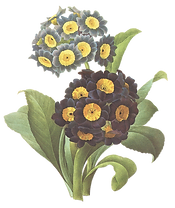Falling in Love with Wildflowers
- Cynthia Thomas
- Aug 22, 2017
- 3 min read
I walked along the dirt road with a shy, handsome young man. Thumping sounds of a summer concert faded into the distance. All around us, bird’s chirped and butterflies danced among the wildflowers. We stopped. With one hand he reached for mine and with the other he pointed to the masses of white flowers that dotted the meadow. “Queen Anne’s lace.”

“It’s in the wild carrot family,” he said. “Do you see the purple dot in the center? That is where legend says the queen pricked her finger sewing the delicate pattern.”
The name captured my heart – fanciful and formal – how did this teenager know such secrets? I was smitten right away – swept up in the heat and hope of tall grass and honeysuckle. We talked and walked. He pointed out all the plants he knew and what they could do. We spoke of the past, of the present, of the dreams we held dear.
While the boy didn’t last, the desire to learn and understand, even identify, the natural world did.
So Queen Anne’s Lace was my first known wildflower and every August she fills the roadsides with her ethereal beauty – delicate white disks on graceful stalks that create a lacy look individually and collectively. She is a pretty backdrop to other wayside flowers – Joe Pye Weed, Blazing Star (Liatris), Burdock (wild Aster), Clover, Thistle, wild Daisies and Chamomile – to name a few.
Introduced to the United States from its native Europe, Daucus carota has naturalized itself throughout the country. It is found growing along roadsides, in pastures and meadows, and at the edge of woodlands. Queen Anne's lace grows from 1 to 4 feet high and produces white umbels of tiny flowers. The flower clusters start out curled up and open to allow pollination. The cluster then rolls itself shut again, like a ‘Bird’s Nest’ when it goes to seed at the end of the season – which is another of its common names.
One important feature of this “herb” is that it smells just like a carrot and grows the same - from a taproot, that is edible when young. This root can be eaten alone as a vegetable or in soup. However, there is a similar-looking plant, called the poison hemlock (Conium maculatum), which is deadly. Many people have died eating what they thought was the carrot-like root of Queen Anne’s lace plant. For this reason, it is vitally important to know the differences between these two plants. Fortunately, you can tell them apart by smell - both Poison Hemlock and its cousin, Fool’s Parsley (Aethusa cynapium), smell disgusting.
A fun fact about Queen Anne’s lace is that, when freshly cut, the flower will draw or change color depending on the color of the water in which it is held - like carnations - and therefore make a popular science demonstration by putting food color in the water.
Interestingly, Queen Anne’s lace is high in sugar (second only to the beet among root vegetables) and sometimes it was used among the Irish, Hindus and Jews to sweeten puddings and other foods. Although you would be hard-pressed to find a recipe for this herb, it is said that the Romans ate it and the early American settlers boiled the taproot in wine as a treat.
While they don't make good cut flowers and I've never tried eating the root, I think one of the aspects I realized on the back country road that still amazes me today – the value of knowing something by name. And the sense of inclusion it brings.
Perhaps that is one of the reasons Adam named all the animals when God brought them to him (Genesis 2:20) – to bring understanding and community, a sense of place and purpose. When one knows the name of something, one cares for it more.
I never could quite understand why guys love to know the name of all the cars, or the bands, or the football players, but I guess it’s similar. Naming is belonging.
Just as those first, awkward love forays will forever be etched in our minds, some of them were, no doubt, more weed than wildflower, yet they captured our heart simply because…
someone other than our family spoke our name. We mattered.
If you get a chance this evening or this week, I encourage you to take a little stroll - and let yourself be enchanted by all that grows on the roadside. Hold your hand out and hear what God says about you:
“Fear not, for I have redeemed you; I have called you by name, you are mine.”
Isaiah 43:1























Comments